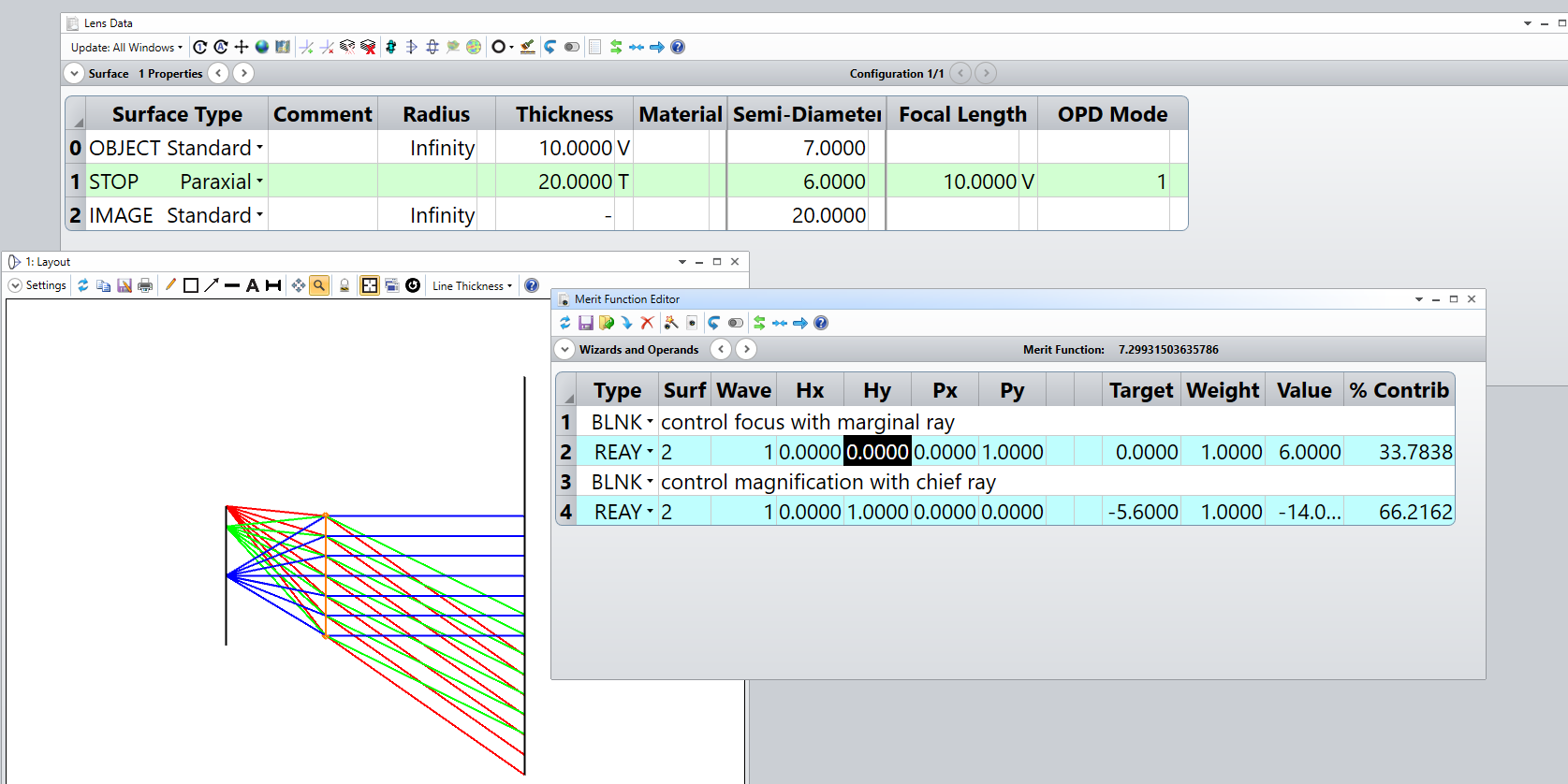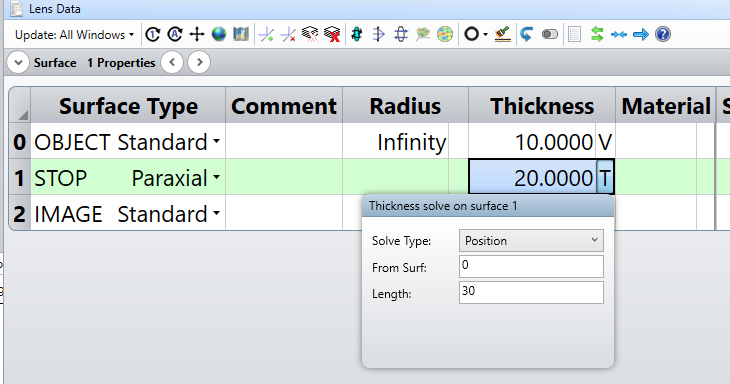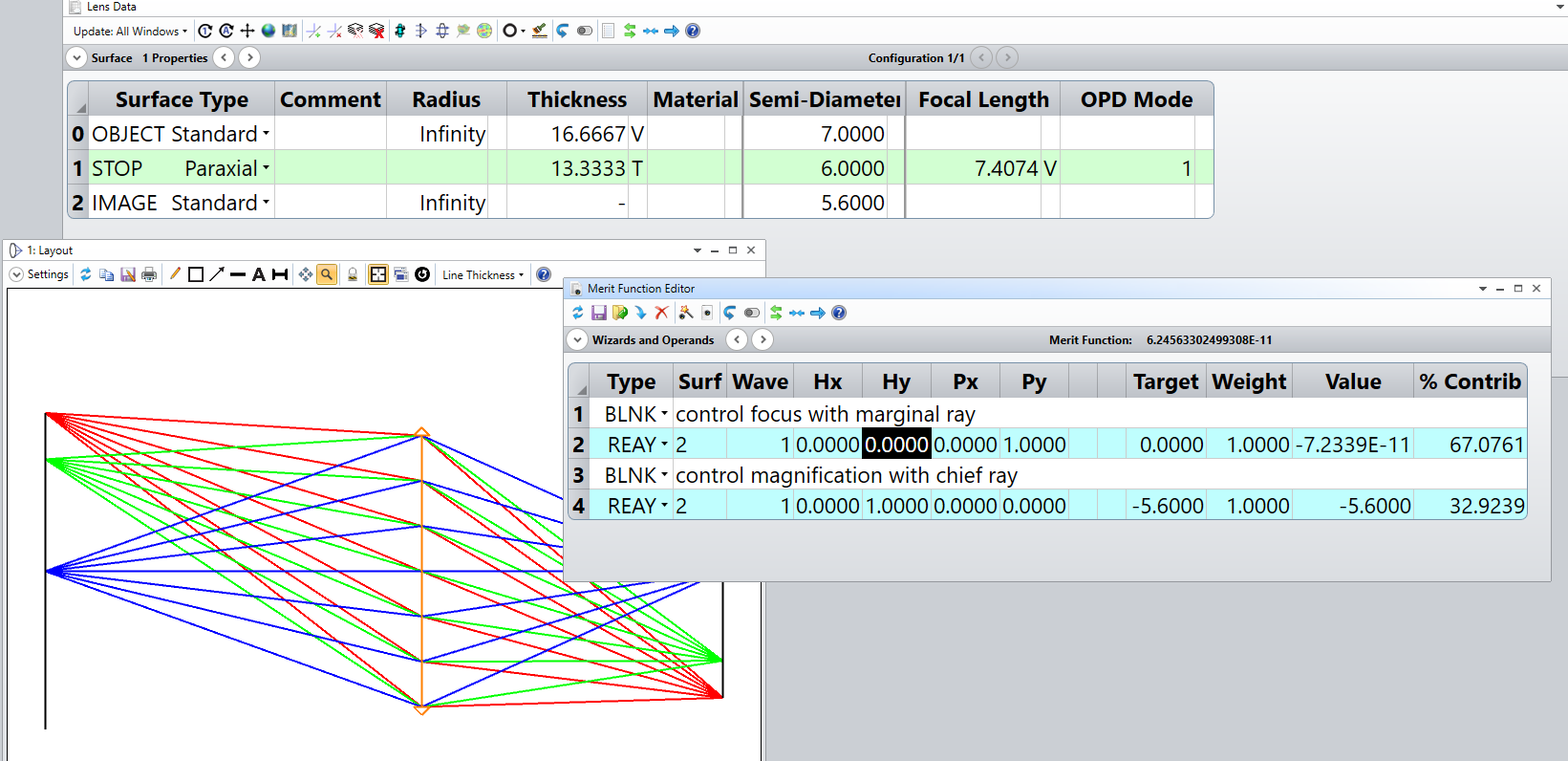Hi everyone,
- I wanted to design lens that will be going to infront of a camera with focal length of 8mm.
- This lens should see an object of 7x7 mm and transform this object into image on sensor of having size 7.37 x 4.91 mm with pixel values 3072 x 2048
- The total track length of the system should be 30 mm.
- And should have capability to magnify of the object by 0.8 X
- Please let me know the design steps of it and its optimization.
- Currently I have done a basic design that has focal length of 8mm.
Please find the attachment of the zemax file.
Thanks










